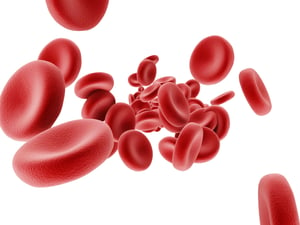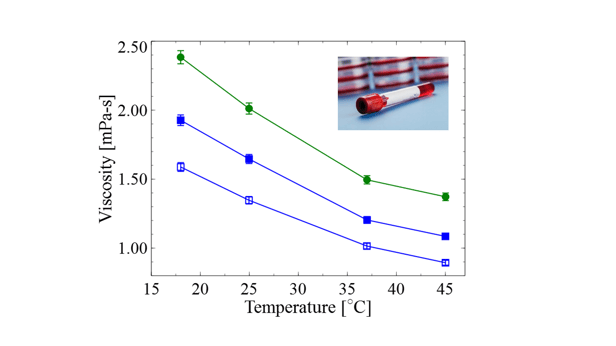
Blood Plasma and Serum Viscosity
Application Note Download
Application Note
Blood Plasma and Blood Serum Viscosity
VROC® powered viscometers for medical diagnosis and research
This application note demonstrates m-VROC® capabilities to accurately determine the viscosity of blood plasma and serum. The viscosity measurements of either of these two fluids can be used to diagnose conditions caused by imbalance and disorders in the different proteins present in blood.
 Figure 1. From top to bottom viscosity of blood plasma, serum and multiple Myeloma serum as a function of temperature.
Figure 1. From top to bottom viscosity of blood plasma, serum and multiple Myeloma serum as a function of temperature.
VROC® technology allows for small sample volume measurements of viscosity over a wide rage of shear rates. Additionally, our instruments overcome some of the mayor challenges possed by conventional viscometry/rheometry methods:
- Sample confinement design avoids samples evaporation and contamination from the enviroment as well as protein aggregation at air-liquid interfaces.
- Our instruments enable highly accurate dynamic viscosity measurements with unsurpased repeatability at a fraction of the time.
- A viscosity measurement can be done with as little as 20 uL of sample

.jpeg?width=300&name=Woman%20scientist%2c%20documents%20and%20hands%20writing%20_575258496-min(1).jpeg)

